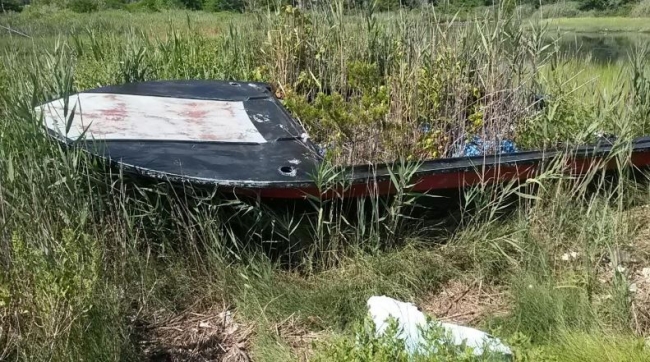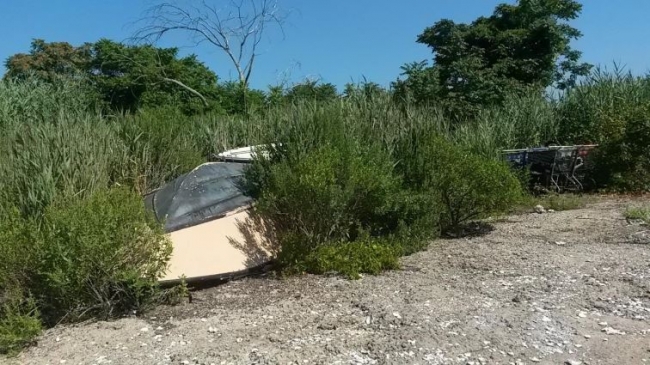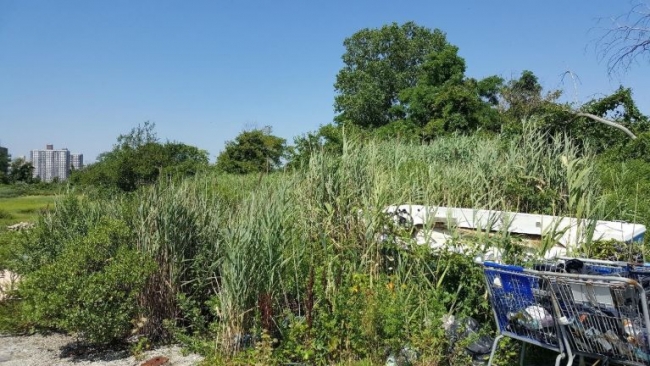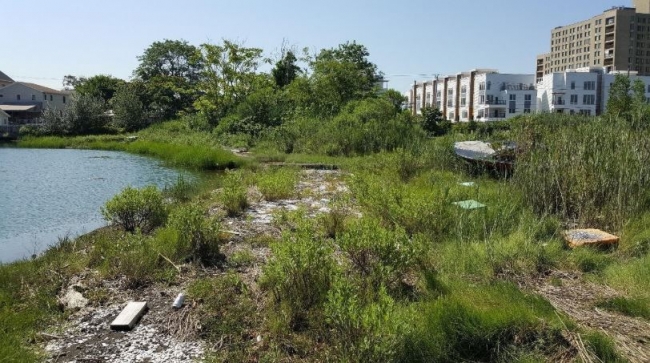Guest blog by: Tyler Gumpright, New York City Department of Parks and Recreation
Spanning over 18,000 acres, Jamaica Bay is one of New York City’s unique estuaries for conservation, as well as urban recreation. The Bay is almost equal to the size of Manhattan and is surrounded by the Rockaway Peninsula to the South, Brooklyn to the West, and Queens to the East. This habitat includes the Seagirt Avenue Wetlands salt marsh and Idlewild Park Preserve. Abandoned boats and other mid- to large-scale debris are scattered throughout the Bay. This includes piles of construction debris, including both concrete slabs and natural stone, and smaller consumer debris items. Debris removal would improve habitat for important wildlife such as diamondback terrapins and salt marsh sparrows and provides habitat for wading birds and fish.
On February 2, 2020, in celebration of World Wetlands Day, New York City Parks and Recreation (NYC Parks) joined community partner, Jamaica Bay-Rockaway Parks Conservancy (JBRPC) and local Council Member, Donovan Richards, for a marsh cleanup event for volunteer community members at the Seagirt Avenue Wetlands. The goal of this effort is to raise awareness about the issue with the local community. JBRPC is a public-private partnership between the National Park Service and NYC Parks, established in 2013 dedicated to fostering stewardship, increasing educational opportunities, and preserving and restoring wetland and wildlife habitat to ensure long-term sustainability of parkland.
This cleanup event is part of a larger effort to improve wetland habitat for local wildlife and migratory birds, and help clean our waterways. With support through a NOAA Marine Debris Removal grant, the project will facilitate the removal of up to 600 cubic yards of material (that’s as many as 60 dump trucks!) from the Jamaica Bay salt marshes. This project is important because the Seagirt Avenue wetlands are an approximately 2-acre salt marsh complex bisected by Bridge Creek, which drains into Bannister Bay. The wetlands provide habitat for a number of fish species and migratory waterfowl. Both Atlantic Sturgeon and Shortnose Sturgeon have habitat ranges that overlap with the cleanup site— and are listed as threatened and endangered species, respectively.
Removing debris will reduce habitat fragmentation and improve the salt marsh by allowing vegetation to re-grow, enhance feeding habitat for the protected wildlife, and provide nursery habitat for wildlife. In addition, the project will prevent the entry of marine debris into subtidal, mudflat, and shallow water areas of the Bay, supporting spawning grounds for winter flounder and horseshoe crabs, as well as summer flounder nurseries.
This project’s removal activities will help ensure a clean Jamaica Bay for future generations and a habitat for commercial and recreational species for years to come. By engaging local community members as environmental stewards, the project will help drive a sustained ecosystem restoration strategy that encourages future protection and conservation efforts in Jamaica Bay.





Hooray! Out here in Detroit, we call this Trash Fishing. It looks like you guys have stumbled upon some great trash fishing grounds. Good luck with your catch!